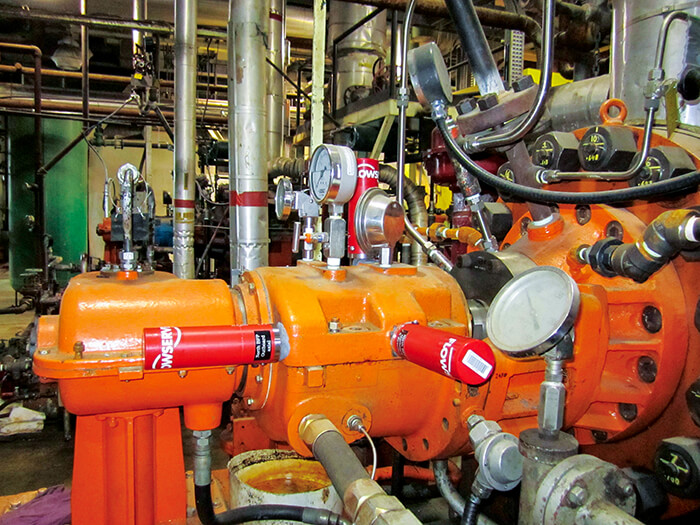Oil refineries and petrochemical facility personnel are excited about the potential for industrial internet of things (IIoT) technologies. Specifically, these operations are interested in how IIoT can streamline equipment maintenance to the point where reliability engineers can detect and resolve equipment problems before they happen.
This ability to “see what matters” requires equal parts instrumentation (to capture real-time equipment performance information) and monitoring (to determine what this data means). Operations that want to leverage IIoT to its fullest need to get both parts of this equation correct, as deficiencies in either will impact the ability to get a complete picture of the equipment’s performance.
Emerging Instrumentation Advancements
Capturing and transmitting equipment data are critical; without an accurate baseline, it is difficult to measure deviations in performance. Today’s instrumentation technology leverages advancements in signal conditioning, transmission and reception, wireless manufacturing and industrial environments. These technologies use open and secure architectures and include seamless interfaces so facility operators can expand instrumentation devices as needs evolve.
Wireless instrumentation systems can capture and transmit a variety of equipment data. This includes, but is not limited to, temperature, pressure, flow, vibration, torque, thrust and others. The data can be transmitted wirelessly either by “single-point” sensors that are self‐powered or self‐transmitting devices that do not require a line of sight.
Incorporating Wireless Technologies
Oil and gas companies often question how to integrate these technologies into existing infrastructure. Interfacing instrumentation technology may require only a serial port connection. Hard-wired connections for analog or digital signals can also be incorporated.
Most systems are configurable to meet a facility’s specific requirements. If an existing hard-wired system requires additional data points, reliability engineers can connect more devices (via plug and play) into the host receiver.
 Image 1. New technologies allow for operators to expand instrumentation devices (Image courtesy of Flowserve)
Image 1. New technologies allow for operators to expand instrumentation devices (Image courtesy of Flowserve)Each transmitting data point should be configured to establish high and low thresholds, addressable IDs and specific clock settings, which allow the transmitter to send packaged data at certain times. This enhances the collection of data, as facilities no longer have to “poll” plant instruments, which can be a time-consuming process. Instead, the receiver merely acts as an aggregator of transmitted packaged transmissions.
Each receiver is capable of accepting up to 300 individual registers. Operators can expand these to 2,000, depending on transmitter clock settings.
Wireless instrumentation offers additional functionalities via an encapsulated programmable logic controller (PLC), which can be configured to initiate functional commands if a condition falls outside of a predefined threshold.
Relevant commands could include turning off a pump, closing an associated valve or turning on an enunciator. The same can be said for any “limit” violation, be it temperature, pressure, level, flow, vibration, critical emissions or any analytical measurement for quality assurance. These commands can be incorporated seamlessly in a single, multiplatform configuration. This allows operations to address any data point or discrete command that needs to be brought into the overall control system configuration. This helps plant operations achieve efficient and cost-effective production schemes that are otherwise cost-prohibitive or impact online production levels.
Monitor & Interpret Data
Accurately capturing equipment performance is only one part of the IIoT puzzle. Over time, instrumentation devices capture thousands of datasets. Effectively monitoring this information and analyzing it for trends are how operations can unlock IIoT’s predictive analytics capabilities.
Predictive analytics is the ability to compare equipment performance data against algorithms and models to determine some action. These algorithms analyze equipment performance data, look for specific indicators, and make predictions on what is likely to happen in the future. By reviewing this information, reliability engineers can instantly see when a pump’s vibration, temperature or other condition begins to deviate from the norm. Observing these trends enables reliability engineers to assess and repair failures before they happen, i.e., predictive analytics.
Rotating equipment manufacturers are developing sophisticated predictive analytics offerings that go beyond trend analysis to identify specific equipment failures before they occur. Proprietary analytic models compare the data captured by these sensors to give companies a complete view of their equipment’s remaining life, most likely failure modes and recommended actions. With this information, operations can take action to respond to adverse equipment conditions before they impact the organization.
Another benefit these technologies provide is the ability for reliability engineers to monitor equipment and predict behavior on a large scale. By connecting equipment monitoring across the network—not just across a plant, but across all operations globally—companies can apply advanced algorithms to compare interconnected datasets from multiple systems to discover operational improvements, predict equipment failures, evaluate equipment life and plan equipment change-outs.
From Reactive to Predictive
Years ago, IIoT seemed like a dream, given the high cost of incorporating wired instrumentation systems into existing infrastructures. The labor—which included breaking up concrete, burying wires and filling it all back in—was cost-prohibitive. Add in the high cost of instrumenting and underwhelming analytics capabilities and you can understand why IIoT was not a viable option for most operations.
Wireless instrumentation can now be installed and bring in hundreds of data points in a matter of weeks, not months.
Implementation costs for materials and labor are minimal when compared to most hard-wired systems. Project schedules are dramatically compressed, making it easier to meet project milestones, system integration and startup dates.


